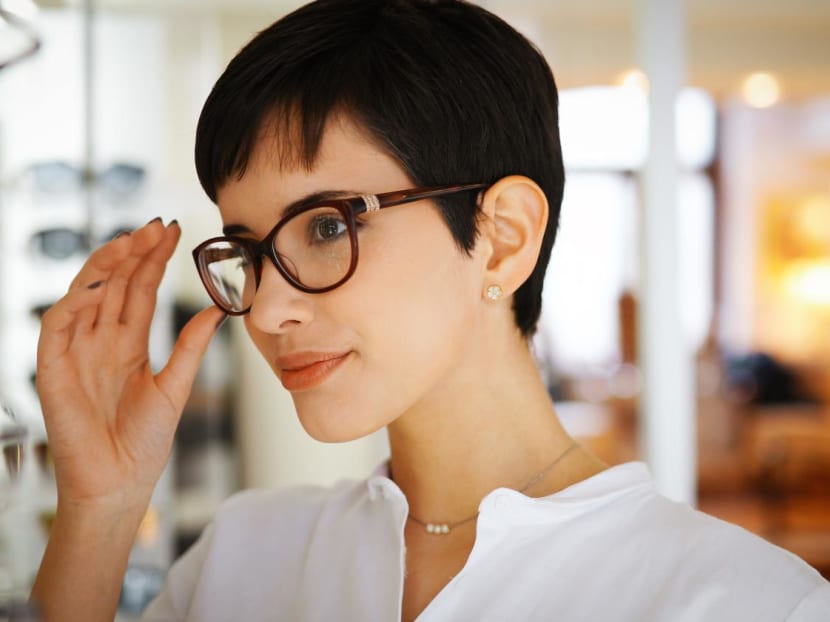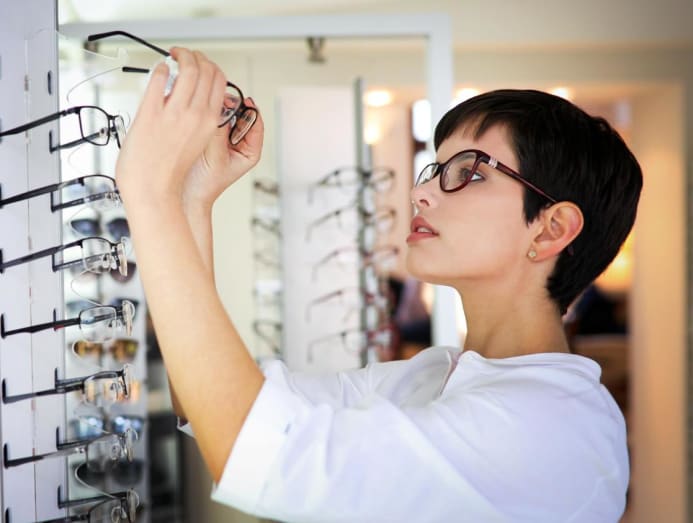Still can't see clearly even with those new glasses? This might be the real reason
The fit of your glasses is a lot more important than you’d think – it’s likely why they aren’t functioning as well as they should be.

(Photo: iStock)

This audio is generated by an AI tool.
If you’ve ever had the experience of wearing a pair of spectacles that didn’t fit quite right, you’d know how uncomfortable and unbearable it can be.
One common complaint is a headache. This could be due to pressure from the temples and temple tips of spectacles that are overly fitting and could also be caused by vision issues including eye strain, giddiness or blurry vision.
But besides causing physical discomfort, did you know that ill-fitting glasses can also affect your vision?
Many of us will take some time to get accustomed to wearing a brand new pair of spectacles. Since the lens may come with a new prescription and the shape and size of the frames are different from your previous pair, your eyes will need to adapt to your new glasses. If you find yourself not able to see sharply after wearing them over multiple weeks, consult your optometrist, who can determine what the problem is.
If the new prescription isn’t the issue, then the fit of your new frames is likely the reason why you are not seeing as well as you should be. Here’s why it’s so important to ensure that your spectacles are sitting on your face properly.
WHY FIT IS KEY

“Proper eyewear alignment is essential to ensure optimal visual clarity. If the frames are not correctly fitted to the face, the central optical zone (where the lens provides the sharpest vision) may be misaligned (with the eyes). This misalignment can reduce visual accuracy and lead to eye strain and discomfort,” explained Delvyn Wong, optician and CEO of Capitol Optical.
This is crucial particularly in the case of those who have a high or complex eyeglass prescription, according to Low Kee Hian, a senior optometrist at O+, a Singapore eyewear brand. “For example, progressive lens users might not be able to see clearly because they are unable to habitually look through the correct area of the lenses,” he said.
Low also pointed out how some other factors relating to fit can also impact vision. “The tilt angle of the spectacles affects the field of view and visual comfort. The distance between the eye and the lenses may also cause changes to the effective power of the lenses in the case of a stronger or complex prescription. Slanted frames may change the axis of high astigmatism cases, which also causes blurry vision.” he said.
SELECTING FRAMES APPROPRIATE FOR YOU

Most people place style as their priority when selecting frames. While there’s nothing wrong with that, it’s also important to choose a design that that will suit your face, functionally speaking.
It may not be possible to find frames that fit your face perfectly, but you can certainly find options that are close to an ideal fit. “The optician can certainly help adjust your new spectacles to the right fit, but do also note that frames that are not suitable for one’s face or head do not have much room for adjustments,” noted Low.
“The optician’s expertise is crucial in guiding the selection process and making sure that the lenses are accurately aligned with the patient’s vision through precise measurements and adjustments,” said Wong. Here’s how to go about choosing a pair that will provide wearing comfort as well as ensure that you can see clearly.

Frame width: The width should roughly match the width of your face at the temples. Frames that are too wide or too narrow can impact wearing comfort as well as vision. “Choosing in a width that matches your pupillary distance would be optimal for the best optical experience,” said Low.
Temple length: The curved part of the temples on the frames should rest comfortably behind your ears – temples that are too short for your head will result in a tight fit while arms that are too long may cause the frames to slip easily down your nose.
Bridge height: If you have a low nose bridge, opt for frames that come with adjustable nose pads. This will significantly impact lens alignment – ensuring that the lenses are in the optimal position, so that your eyes are aligned with the central optical zone on the lenses.
HOW THE OPTICIAN CAN PERFECT THE FIT

“While most parts of spectacle frames can be adjusted for a better fit, the rims have a fixed size and shape that cannot be altered. However, opticians can fine-tune several areas to ensure your glasses sit comfortably and securely, as well as for clear, comfortable vision,” said Wong. Here, he shares how the various parts of spectacle frames can be tweaked.
Nose pads: The arms connected to the nose pads can be adjusted in various directions so that they rest snugly and comfortably on your nose bridge.
Temples: The arms of the frames can be bent slightly inwards or outwards to correct either a too-loose or too-tight fit respectively.
Temple tips: Adjusting the curve of the temple tips allows them to rest securely behind your ears without being too tight. A well-balanced fit helps prevent discomfort and pressure points. If the temple tips are too long, an optician may trim the inner metal core slightly to create a curve that adheres better behind your ears.
Hinges: Tightening the screws on the hinges will also tighten the fit of the frames for a snugger feel. This may help to keep your frames in the correct position on your face for correct eye-to-lens alignment.
“Properly fitted eyewear should provide comfort without causing excessive pressure on the nose bridge or behind the ears. While spectacles naturally have some weight due to the lenses, a well-adjusted frame distributes this weight evenly to minimise discomfort,” said Wong. The right fit not only enhances comfort but also will allow you to see clearly, which is what your new prescription and frames should accomplish.




